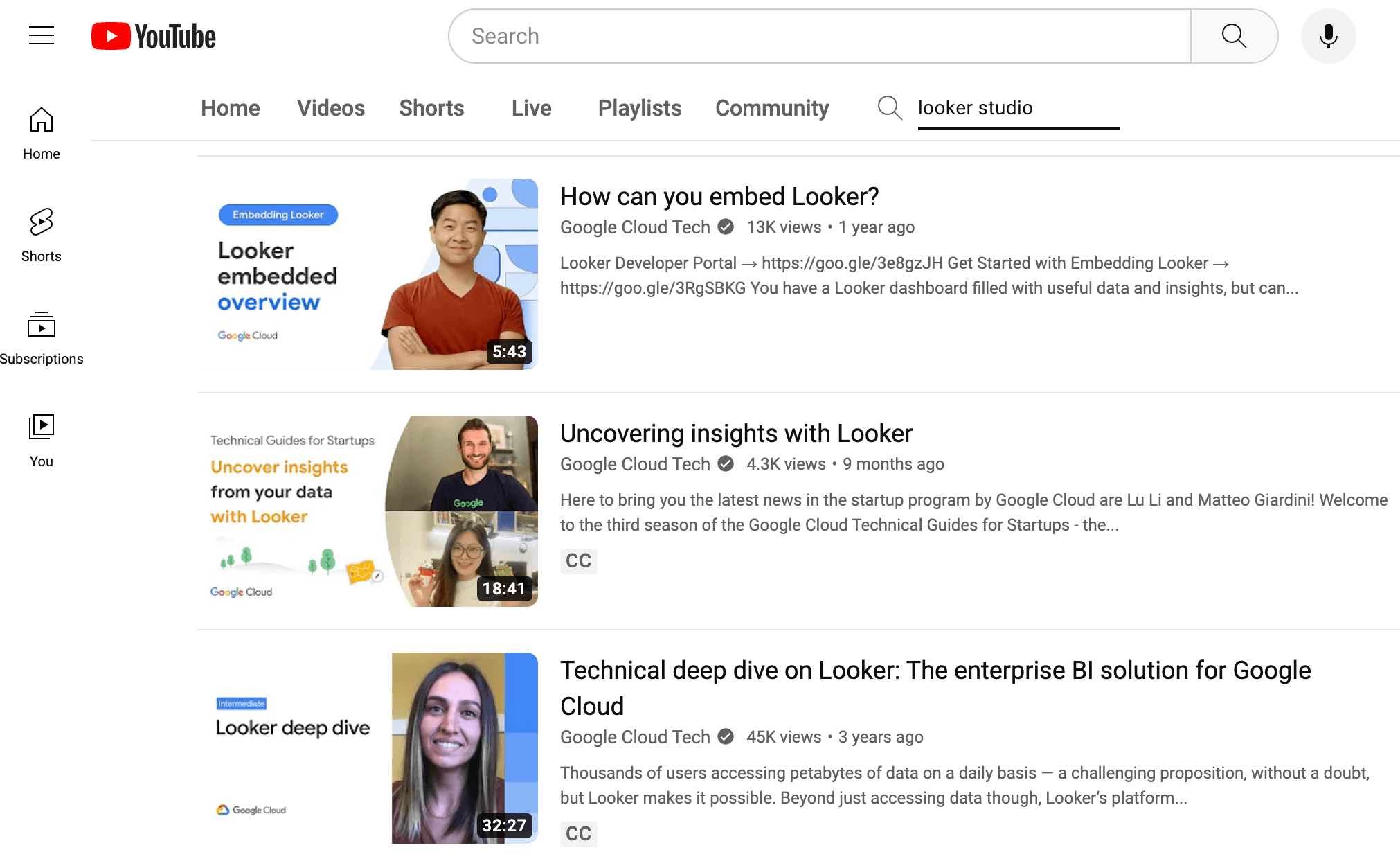Are you able to establish the value of your marketing activities? Looking for a way to deliver data anyone can understand?
In this article, we’ll explore how to clearly convey your marketing value using analytics.

Why Should Marketers Focus on More Clearly Conveying Their Metrics?
In the digital age, everyone has access to data. But metrics alone cannot drive your business's impact without thoughtful analysis tailored to your business's specific growth objectives.
Effective marketers know that data and analytics are essential for demonstrating their business's value. Yet, many struggle to clearly convey metrics and insights to their key stakeholders like bosses and clients. Developing strategies for leveraging data into persuasive narratives helps you secure resources and influence decision-makers.
Many marketers fixate narrowly on outputs instead of outcomes. But volume metrics like emails delivered or blogs published reveal nothing about actual business impact without further analysis. Focusing solely on outputs leaves marketers vulnerable to low-cost replacement. When anyone can promise more volume at a lower price, the value of expertise becomes harder to quantify.
Unfortunately, most analytics platforms exacerbate this dynamic by providing ambiguous standardized reports unsuitable for specific organizations. A McDonald's franchise may care about different metrics than an enterprise SaaS company, for example. Relying on generalized analytics makes it impossible to accurately evaluate your marketing's contributions.
JJ Reynolds, founder of Vision Labs, a data agency that helps leading brands measure and optimize their growth, discovered this while working in digital marketing, creating promotional content for Napa Valley wineries.
Intrigued by Facebook's advertising capabilities, he began experimenting with boosting his clients' videos on the platform. As JJ allocated more spending toward Facebook ads, he recognized clients struggled to maximize the assets he produced. Videos ended up buried on winery websites rather than reaching prospective customers. Facebook represented a huge opportunity to amplify his media through targeted distribution.
Over time, JJ transitioned into managing ads for solar companies, observing how agencies often obfuscated analytics to mask poor results, allowing them to bill unsuspecting clients during seasonal revenue dips. Breaking out “data services” as a line item on his invoices, JJ found strong demand for his analysis services even when clients outsourced their media buying. Good marketing requires good data. The key, JJ says, is translating data into clear, actionable insights tuned to each business.
Powerful reporting requires connecting channel data to strategic goals through customized dashboards. Google's free Looker Studio, formerly Google Data Studio, facilitates this by ingesting disparate data sources into a unified interface with visualizations tailored to each user.
Any data source that has an application programming interface can be pulled into the reporting system, such as YouTube, Google Ads, HubSpot, Stripe, Facebook, Google Analytics 4, etc.
Marketers can hone the exact questions that will provide actionable answers for their company's unique needs as opposed to using Google Analytics for generalized solutions, for example.
#1: Apply Analytics Strategically
The flexibility of tools like Looker Studio allows you to thoroughly test and optimize every aspect of your marketing funnel. Users can instantly access custom reports examining conversion paths by traffic source and landing page, assessing the impact of different channels, creatives, formats, geographic markets, devices, and more on the metrics that matter most to their business—all central to maximizing return on their marketing expenditures.
Looker Studio produces visual real-time reports that are easy for your boss or clients to understand, and you can customize which metrics you choose to share, either to your email list or publicly, for example. With easy drag-and-drop tools and pre-built templates, no coding or advanced technical skills are required to create insightful visual reports—it's essentially the Canva of analytics. Vision Labs has several videos demonstrating Looker Studio's capabilities. You can even see an ungated report specific to the agency.
Get World-Class Marketing Training — All Year Long!
Are you facing doubt, uncertainty, or overwhelm? The Social Media Marketing Society can help.
Each month, you’ll receive training from trusted marketing experts, covering everything from AI to organic social marketing. When you join, you’ll also get immediate access to:
- A library of 100+ marketing trainings
- A community of like-minded marketers
- Monthly online community meetups
- Relevant news and trends updates

You can tailor analytics to your organization's structure and vertical and strategic goals using custom dashboards. Dashboards facilitate longitudinal analysis, which is essential for optimizing your campaigns but is challenging within individual solutions like Google Analytics. Looker Studio allows you to be a sniper, zeroing in on your impact zone.
A 3-Step Framework to Track 3 Key Metrics That Convey Marketing Value
- People who saw your product—people who viewed your sales page on your eCommerce site, for example.
- People who engaged with your product—people who added your product to their cart or viewed the pricing table of your SaaS, for example.
- People who bought your product
Let's say 1,000 people saw your product, 500 engaged with it, and 100 people bought it. You can break that down by traffic sources to see how Facebook is compared to Google, for example. This helps determine where your spending will be.

Discover Proven Marketing Strategies and Tips
Want to go even deeper with your marketing? Check out the Social Media Marketing Podcast! Publishing weekly since 2012, the Social Media Marketing Podcast helps you navigate the constantly changing marketing jungle, with expert interviews from marketing pros.
But don’t let the name fool you. This show is about a lot more than just social media marketing. With over 600 episodes and millions of downloads each year, this show has been a trusted source for marketers for well over a decade.
You can also break it down further by affiliate partner, products, day, page type, geography, desktop versus mobile, and more—things you can control. Then you can ask “buy questions,” like what are you going to do if you find that mobile is converting at half the rate of desktop? And if you don't know, then you might not have developed capabilities to adjust to mobile, for example.
JJ recommends starting small. Focus on your traffic source and landing pages first. Then, you can dive into more complicated metrics.
Additionally, Looker Studio's marketing efficiency ratios divide ad cost by new customer revenue over days, weeks, or months to help determine the sustainability of your spending for lead generation. Regular automated reporting ensures critical insights reach decision-makers without requiring them to interface directly with analytics.
For many marketers, the greatest utility lies in quickly eliminating waste by discontinuing campaigns, platforms, and other initiatives generating negative ROI. As JJ explains, “The easiest win is to stop sucking.” Losing money helps no one. Leveraging tools like Looker Studio to stop ineffective spending makes room for investments in new strategies that actually drive your business's growth and build stakeholder trust.
#2: Craft Compelling Data Narratives That Establish Your Value
Data narratives help shape your business's perception rather than simple vanity metrics. When presented clearly and contextually, analytics can demonstrate your marketing value and directionally guide your boss or clients toward advantageous choices. However, metrics can often confuse your stakeholders instead of convincing them when they're administered poorly.
JJ suggests first identifying which key performance indicators matter most to those controlling resources. Every stakeholder cares about something different. C-suite executives want assurance that marketing spend yields returns. Founders of startups need to know they are picking the right channels and tactics. What does your CFO care about? Website traffic? Lead volume? Customer acquisition cost? Lifetime value per subscriber?
Before analyzing anything, you must understand which metrics your audience values. Constrain your reporting to the critical metrics that directly address stakeholder interests and influence decisions.
Data's persuasive power depends on how clearly you contextualize your insights. With key performance indicators established, integrate your analytics into persuasive narratives. These reports should state your initiative origins, show impacts on both macro and micro levels, and connect outcomes directly to your business outcomes. This facilitates decision-making for the next steps.
For example, outline the hypotheses, budget, timeline, platforms, and personnel for each of your campaigns alongside the measurable marketing results it drove. Package your data into a cohesive story centered on attributing growth and revenue to the work product. Let's say you're a marketer for an agency testing out TikTok advertising. You would outline the hypothesis campaign parameters like budget and timeline and then present data from TikTok itself and Google Analytics detailing actual traffic, conversions, and performance benchmarks.
So, you've taken two data sources and combined them into one report, and now you can say, “Hey, boss, we earmarked $10,000 for this experiment. Here's what I think the impact was.” You have a visually compelling story where you've pulled in multiple data sources to do well.
Even negative test results have story value, too, when packaged effectively. Demonstrating the ability to recognize poor performance allows you to shift resources away from ineffective tactics toward more productive channels, partnerships, landing pages, ad sets, etc.
Missteps can also open conversations around improvements with both internal and external stakeholders. Tactful data narratives make room for you to develop new initiatives likely to succeed rather than continuing to sink costs into losing propositions. The point is to equip your stakeholders with the data that drives your proposition value.
Data means little without the right questions and context. For marketers struggling to prove their value, leveraging data analytics to real business outcomes represents an opportunity to build stakeholder trust through transparency while securing the resources needed to execute growth strategies with maximal efficiency.
JJ Reynolds is founder of Vision Labs, a data agency that helps eCommerce, direct response, and SaaS marketers better analyze their performance. His course is called The Lab, and it helps marketers build better reports. You can find him on LinkedIn. Check out more resources here.
Other Notes From This Episode
- Connect with Michael Stelzner @Stelzner on Instagram and @Mike_Stelzner on Twitter.
- Watch this interview and other exclusive content from Social Media Examiner on YouTube.
Listen to the Podcast Now
This article is sourced from the Social Media Marketing Podcast, a top marketing podcast. Listen or subscribe below.
Where to subscribe: Apple Podcasts | Spotify | YouTube Music | YouTube | Amazon Music | RSS
✋🏽 If you enjoyed this episode of the Social Media Marketing podcast, please head over to Apple Podcasts, leave a rating, write a review, and subscribe.
Stay Up-to-Date: Get New Marketing Articles Delivered to You!
Don't miss out on upcoming social media marketing insights and strategies! Sign up to receive notifications when we publish new articles on Social Media Examiner. Our expertly crafted content will help you stay ahead of the curve and drive results for your business. Click the link below to sign up now and receive our annual report!
Attention Agency Owners, Brand Marketers, and Consultants

Introducing the Marketing Agency Show–our newest podcast designed to explore the struggles of agency marketers.
Join show host and agency owner, Brooke Sellas, as she interviews agency marketers and digs deep into their biggest challenges. Explore topics like navigating rough economic times, leveraging AI, service diversification, client acquisition, and much more.
Just pull up your favorite podcast app, search for Marketing Agency Show and start listening. Or click the button below for more information.

